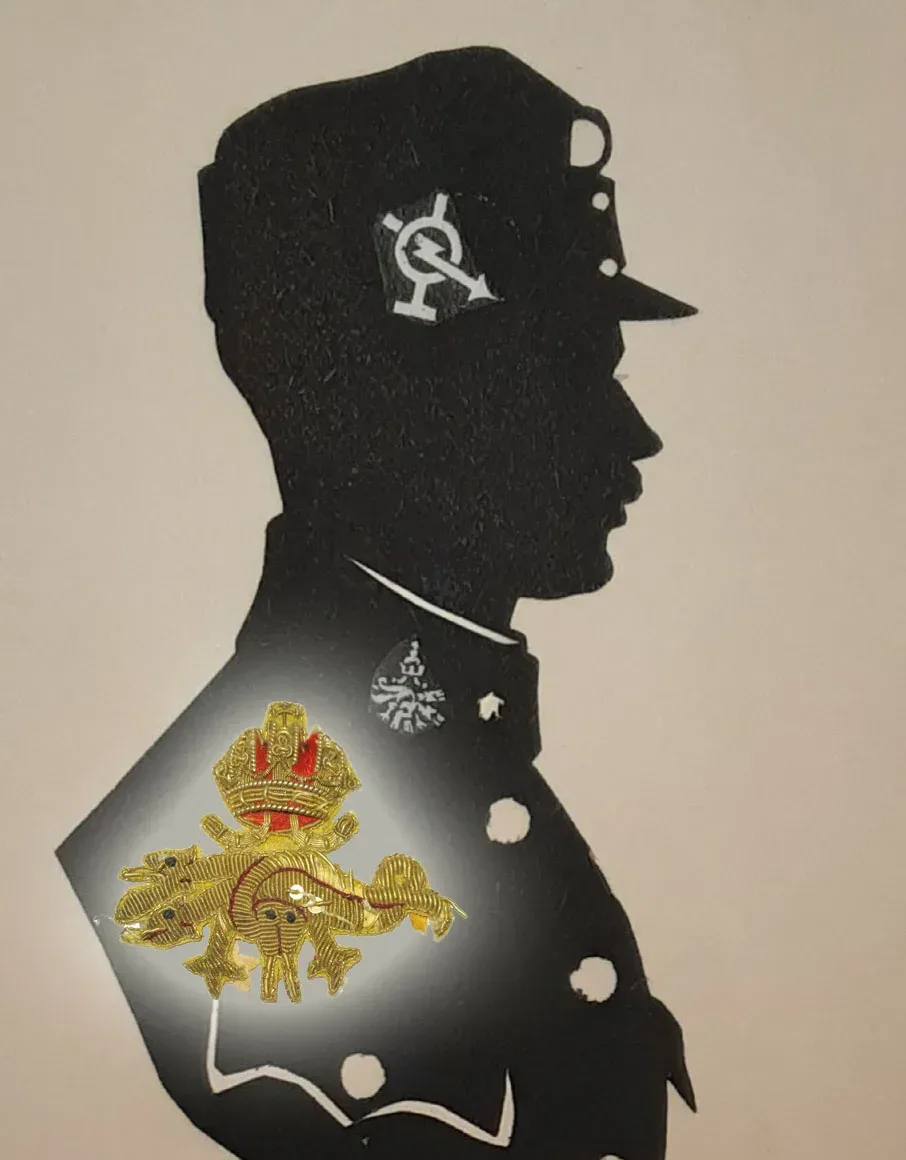Machine gunners’ collar and cap badge
New post written by Gábor Széplaki
In order to meet the requirements of modern warfare, first in 1908 pike gray and then camp gray clothing was introduced into the army of the Monarchy. Simultaneously with the unification of the uniforms, there was a legitimate need to differentiate between the types of troops and to show the special military qualifications and skills in a visible way. As a solution to this, new regulation was issued in the second year of the World War, when on May 21, 1915 for the joint troops (by Decree No. Ab 13, Hr 20152), and then on June 11 for the Royal Honvéd Forces (by Decree No. 136921/7) the machine gun metal collar badge and the metal cap badge were introduced.

As can be seen from the drawings in the decree of K. and K. annexed above, the collar badge featured the highly expressive crowned fire-dragon motif. This was already used as the centerpiece of the Machine Gun Skill Award of 1908. The cap badge was chosen to display the machine gun insignia used on military maps.

The badges were worn by soldiers from the machine gun squadrons on both the collar and the field cap. The staff, commanded or assigned to the corps, wore them only on the collar. On their caps they had to wear the waxed mark of their original troop insignia. Interestingly, the circular decree prescribed wearing on the right side of the cap, but in many cases this happened on the left side. Wearing a cap badge was only allowed on field clothing in the army, or in major peace troop exercises, according to the wording of the circular decree.


The badges were arranged in silver for the crew and for the chief officers wearing gold trimmings in silver. Officers’ badges were gold colored. The badges were mirrored to the centerline of the uniform, i.e. there were pieces on the right and left. According to the decree: “The collar badge is worn by officers and crew performing face-to-face service with the machine gun. The badge shall be affixed as soon as the wearer retires from that service or is withdrawn from it for any reason for a period exceeding eight weeks. “


The badges were manufactured by several companies or craftsmen in the area of the Monarchy, so they show differences in material, size and design.

A collar badge embroidered with metal thread and sequins can also be seen on the uniforms exhibited in several museums, as well as on auction sites. These were probably prepared privately for wealthier officers. Between the two world wars, the left-hand pieces of the Hungarian holy crown version collar badge were used in the Royal Hungarian Army until the mid-1930s as a vocational badge sewn on the left upper arm of the jacket or cloak with a weapon-colored cloth washer.




